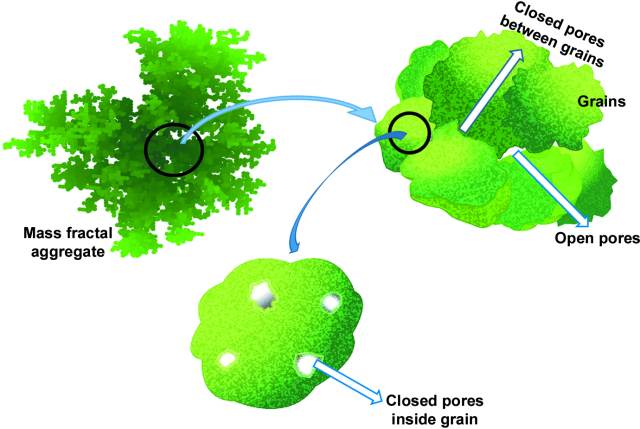Cementing radioactive waste
Cement would make a useful material for locking away radioactive waste except for the fact that conventional cement is susceptible to weathering. When water infiltrates its pores, it freezes and when it thaws, the resulting cracks can fracture the cement blocks. Moreover, adding foreign materials to the standard cement slows the hydration process required for the mix to harden leading to greater porosity and an increased risk of radioactive elements leaching out through long-term wear and tear.
In order to improve the cement formulation for a more sustainable and safer nuclear waste storage medium, materials scientists need a clearer understanding of the standard porous structure of cement and how this is altered by the presence of radioactive waste, such as cerium waste. Cerium waste is generated during decontamination of alpha-contaminated metallic components used widely in nuclear reactors. Now, Das and colleagues at the Bhabha Atomic Research Centre, Mumbai, India, have used a powerful analytical technique known as Small-angle neutron scattering (SANS) to see inside the structure of the waste loaded cement matrix. [J. Appl. Cryst. (2014), 47, 421-429; DOI: 10.1107/S1600576713033463, J. Appl. Cryst. (2014), 47, 4-5; DOI: 10.1107/S1600576714000223]
 SANS involves observing incident thermal neutrons scattered by mid-sized, mesoscopic, density fluctuations in condensed matter, such as a cement matrix. By analyzing the shape and nature of the scattering profile the researchers can extract structural details from the sample. SANS can probe the interfaces of both closed and open pores in cement, unlike other techniques such as mercury porosimetry where liquid mercury is used to measure the size of the pores. SANS can also provide statistically well averaged bulk structural properties of the material whereas, analysis using microscopy is very localised. However, by combining the SANS structure with images obtained by scanning electron microscopy and mercury porosimetry, the researchers were able to build up a coherent picture of the different pore sizes present and their range of lengths. They could thus compare a solid cement sample with a sample loaded with cerium waste.
SANS involves observing incident thermal neutrons scattered by mid-sized, mesoscopic, density fluctuations in condensed matter, such as a cement matrix. By analyzing the shape and nature of the scattering profile the researchers can extract structural details from the sample. SANS can probe the interfaces of both closed and open pores in cement, unlike other techniques such as mercury porosimetry where liquid mercury is used to measure the size of the pores. SANS can also provide statistically well averaged bulk structural properties of the material whereas, analysis using microscopy is very localised. However, by combining the SANS structure with images obtained by scanning electron microscopy and mercury porosimetry, the researchers were able to build up a coherent picture of the different pore sizes present and their range of lengths. They could thus compare a solid cement sample with a sample loaded with cerium waste.Das and colleagues have also demonstrated the use of the multiple scattering phenomenon, often present in scattering from porous materials. This allowed them to infer the loss of uniformity or homogeneity, in the waste-loaded cement with an increase in waste-loading concentration.
The team points out that mesoporous pores within Portland cement sample affect how well particular cement will endure stressful conditions such as water intrusion and other forms of weathering. This would therefore reflect how long such a sample might remain intact. Their experiments reveal that pores of about 350 nanometres in diameter are most affected by the addition of cerium waste to the initial cement mix, as opposed to smaller pores of less than 50 nanometre diameter. They explain that pore size increased by more than a fifth when the cement mix is loaded with just 25 grams per litre of cerium waste. Moreover, the presence of cerium waste also led to more branching of the pores within the solid cement, which again could worsen the effects of water ingress.
The research puts an upper limit on the amount of radioactive cerium waste that could safely be stored in cement at 15 grams per litre. At this level, pore size is not affected significantly and the cement mix will produce a material as strong and resilient as any standard cement.
David Bradley


